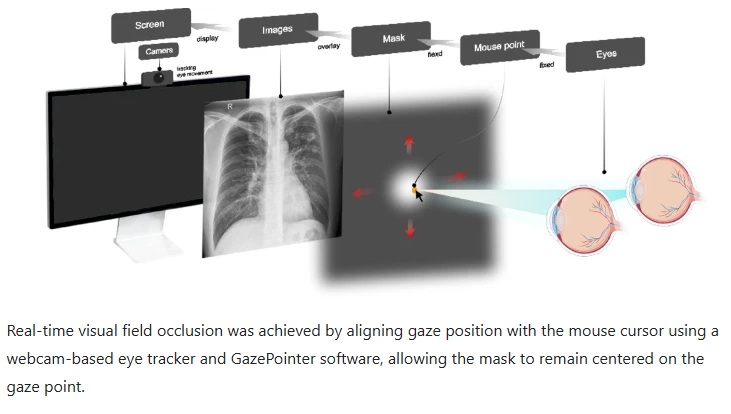Accurate medical image diagnosis is essential in clinical practice and places high demands on the diagnostic skills of imaging professionals. However, a significant shortage of radiologists highlights the gap between supply and demand, leading to the importance of education. Traditional education has largely neglected the development of visual perception skills, which play a critical role in lesion detection. This study aims to investigate visual training methods that can effectively enhance learners’ perceptual abilities in medical image interpretation through a pre-post experiment. In the experiment, the participants of intervention groups underwent intensive training targeting uncovered visual areas under central or peripheral vision occlusion conditions. The result showed that peripheral vision training significantly improved participants’ diagnostic mean accuracy (from 59.5 to 68.0%, p < 0.001), mean sensitivity (from 69.0 to 79.5%, p < 0.001), mean positive predictive value (from 65.6 to 82.9%, p < 0.001), and reduced mean task time (from 1163.4s to 877.3s, p < 0.001). However, neither peripheral nor central vision training significantly improved specificity and negative predictive value, which were metrics of negative diagnostic ability. Consequently, enhancing peripheral vision perception helped to reduce missed diagnoses, but with limited impact on reducing misdiagnosis. The peripheral training enhanced the effectiveness of medical image diagnosis education to provide competent professionals in the field.
https://www.nature.com/articles/s41598-025-09253-y

The participants’ training and tests were conducted on two web-based platforms. The experiment used standardized 24-inch monitors with a resolution of 1920 × 1080 pixels for the training and tests. The training platform utilized eye-tracking technology to achieve real-time occlusion of specific visual fields. Specifically, GazePointer software was employed with a standard webcam for eye tracking and mouse control. In a review of 16 different webcam-based eye-tracking software, GazePointer demonstrated an accuracy of 1.43 degrees